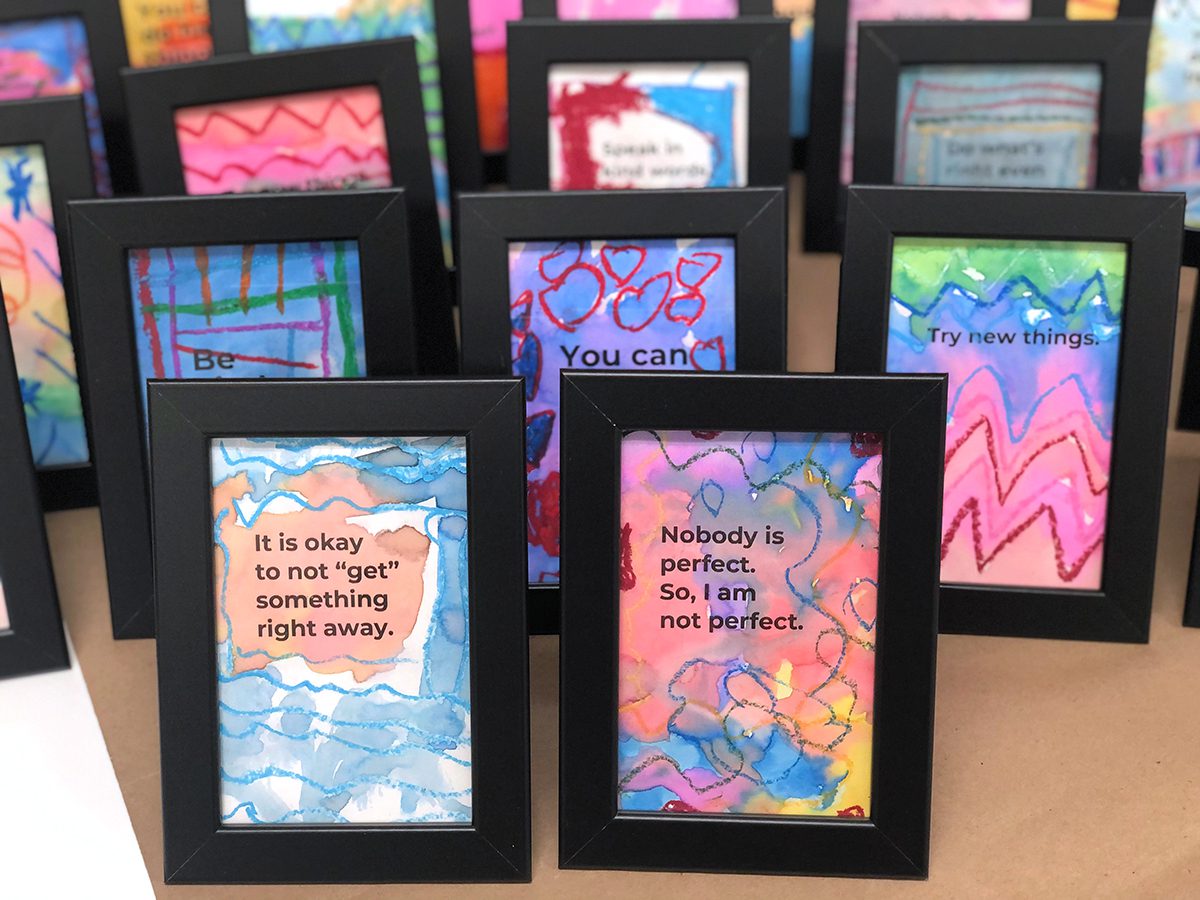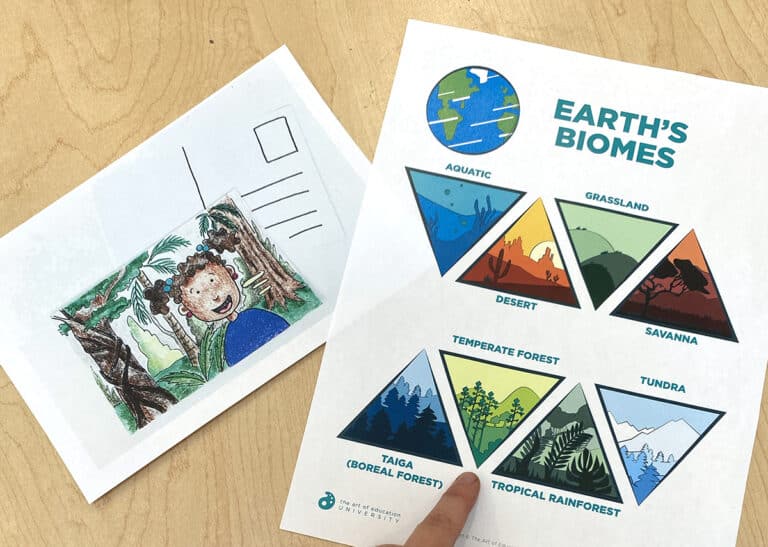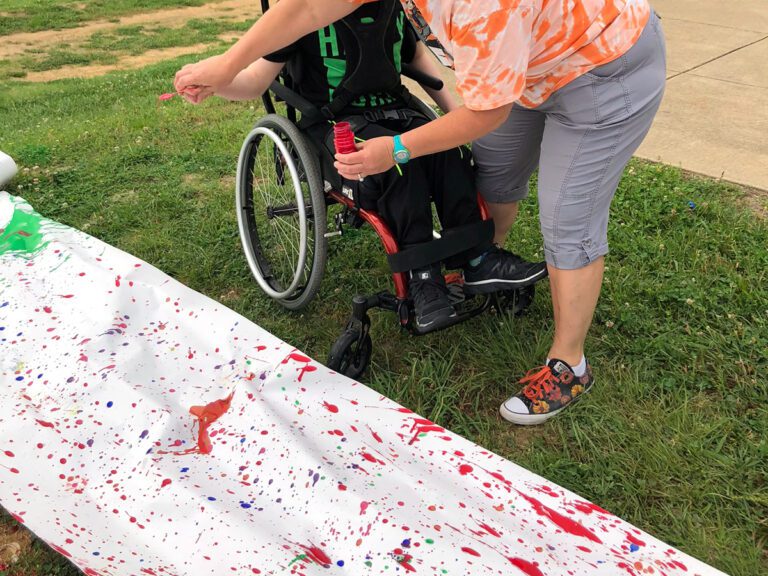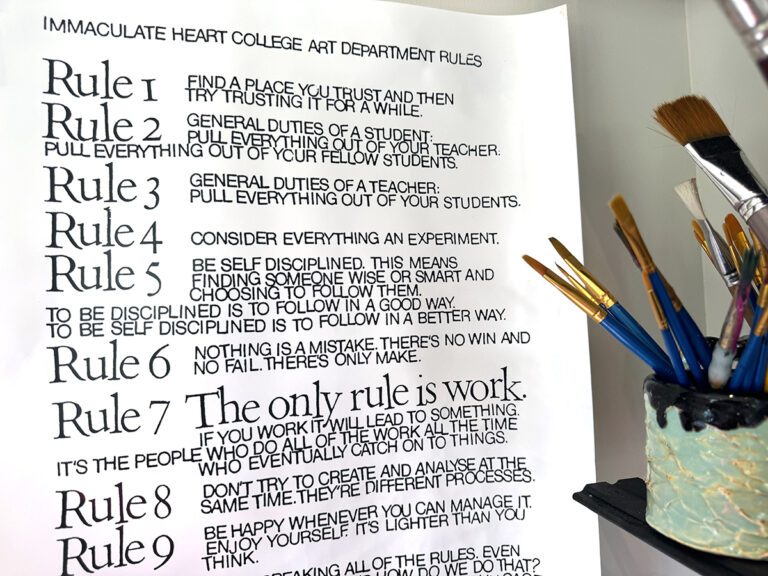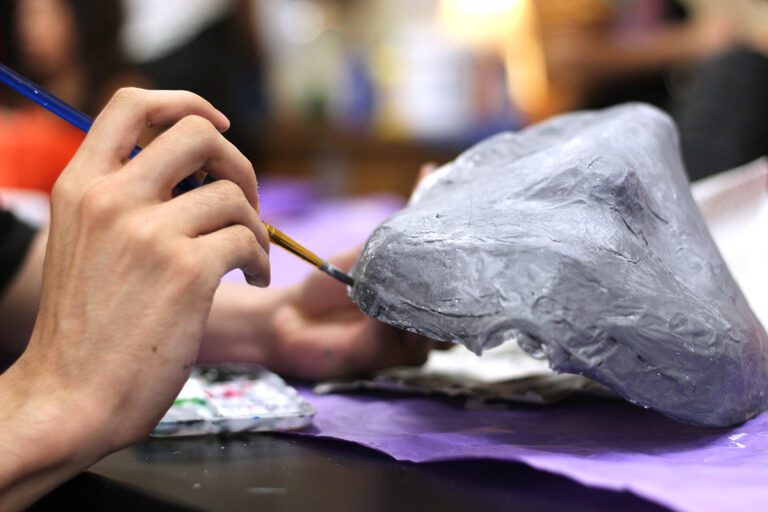Why do we make art? We all are passionate about making art—that’s why we are in this field. But how often do you reflect on why you do what you do and who you do it for and discuss that with your students? Artists engage in artmaking for a variety of reasons: to express themselves, to respond to current events, or to explore a technique. Artists play and build bridges with others. A work of art gifted to another person is valued for the sentiment and how it celebrates and uplifts the giftee. The benefits of artmaking focused on someone else extend beyond the recipient to include the artist themselves. The decision to make art with an empathetic mindset informs all aspects of the creative process and may provide comfort when it is needed most.
How does this connect to social-emotional learning?
Producing artwork for someone else requires engagement with social-emotional learning (SEL). The artist must have social awareness, the knowledge of others, and empathy, understanding the experiences and feelings of others. To create artwork for another person, the artist’s knowledge of this individual should be at the forefront of their mind throughout the creative process. They are challenged to work with care, thoughtfulness, and selflessness, which, of course, leads to an awareness of self.
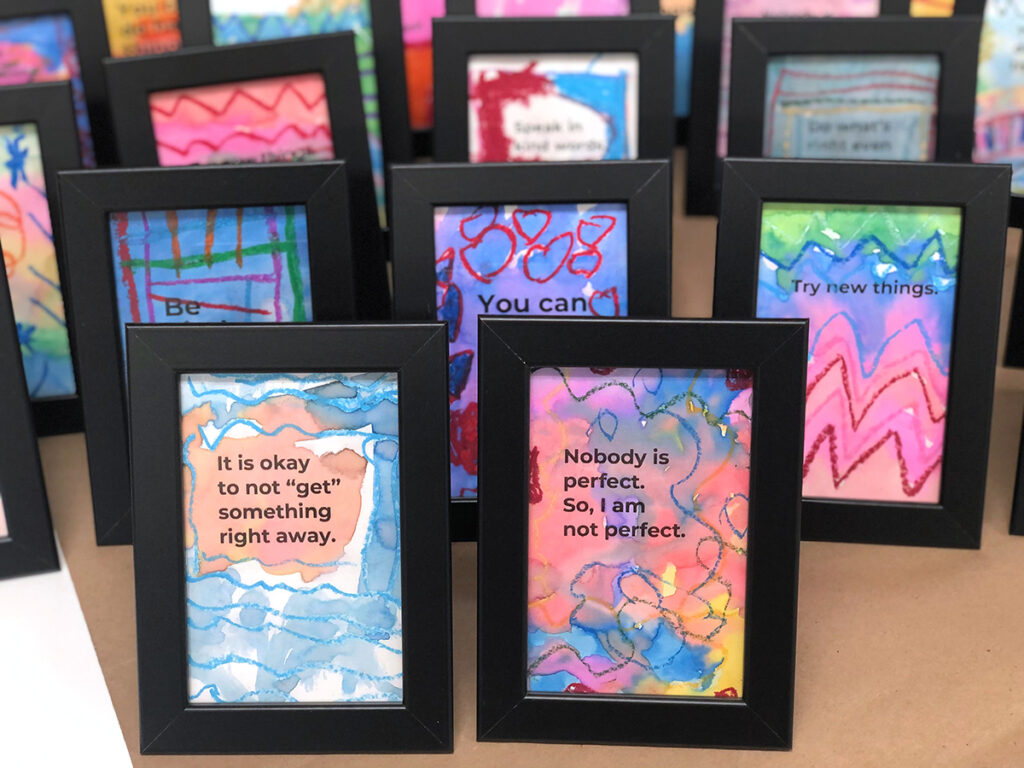
Who do we make art for?
When tasked with creating art for another person, most elementary kids will announce their decision to gift their artwork to a parent or the art teacher in front of them. Yet, many more individuals can benefit from the gift of a handmade work of art. It may be a challenge to get students to think beyond the familiar, but it is very rewarding for all when we can help students spark broader notions.
Here are four ideas for gifting artwork:
1. Commission Requests
There is a consistent need for designed items within a school: someone needs a poster, there is a banner request for a sports team, or the librarian is seeking personal bookmarks to hand out to students. Instead of you, the art teacher, making every poster, banner, or bookmark, why not have staff commission student-made works? Create a standardized form that staff in the school building complete for artwork requests. Students select a commission request that fits their ability and style. Then they create the work for the staff member in the building. This process can be an excellent start to understanding the client/designer relationship and the fundamentals of composition and design.
2. Wheel of Options
You can repurpose a spinning prize wheel for many uses. For example, you can pair a spinning wheel with numbers to a corresponding chart of people, including the principal, bus driver, secretary, best friend, neighbor, and more. Starting the creative process with this person in mind will result in a more focused end product.
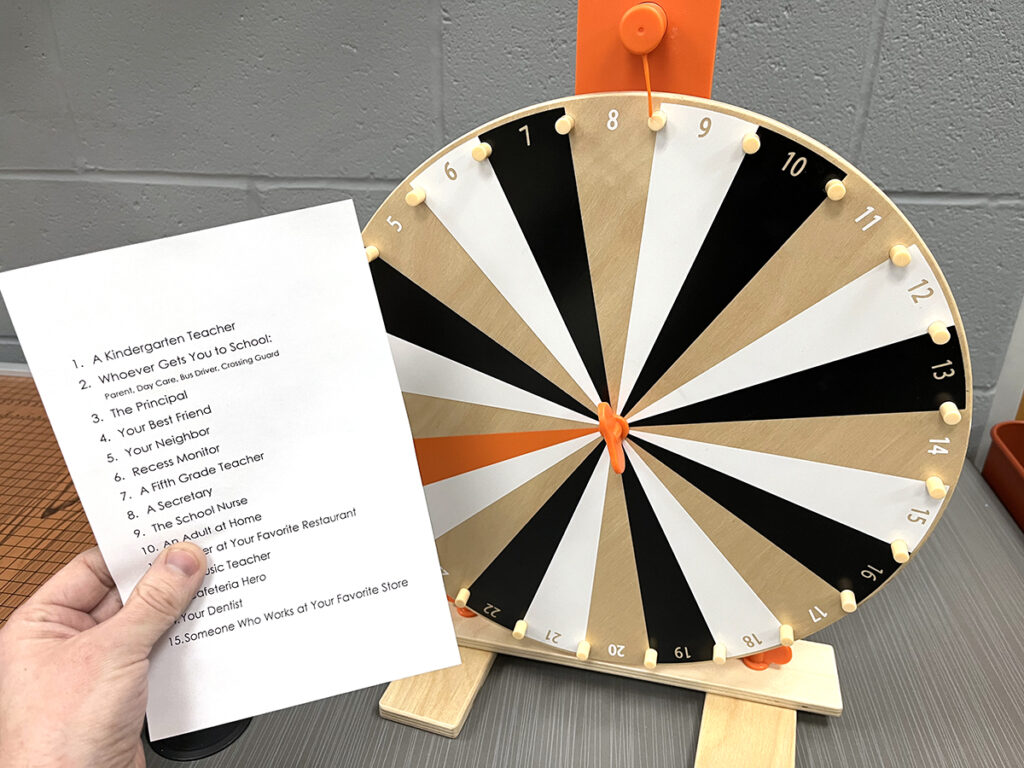
3. Classmates
In an episode of the podcast, The Art of SEL, high school art teacher Pilar Biller explains a process she leads her students through based on Humans of New York. Pair students up to interview and listen to one another. Each student gets a chance to play both the interviewee and the interviewer. Then, the two students create a work of art for each other based on their interview session. Similarly, this experience works well to foster stronger teacher-to-teacher relationships. During a professional learning day, pair teachers up to interview one another and create a piece of art for their partner. Interviewing, listening, and then creating artwork for another teacher challenges us to consider how we learn from and support one another.

4. Those in Need
Often when there is a natural disaster or an expressed need for support in the community, the first place we jump to is canned food or donations of money. But how can artmaking fuel empathetic reactions amongst students? When Hurricane Harvey hit Houston, my students thought about an impacted school’s need for art supplies. Inspired by Tyree Guyton and Yayoi Kusama, we formed a large house structure covered in paper polka-dots. Each unique paper circle reflected one art supply my students donated to a Houston school. Their artmaking had a purpose that extended beyond the classroom experience. Check out this video to learn more about their process and empathetic mindset.
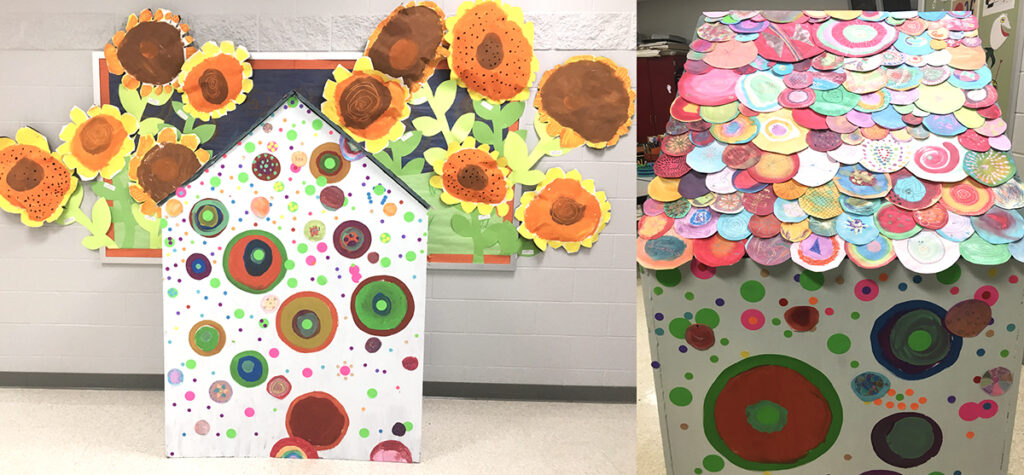
To consider other artmaking experiences that support those in need, get your brainstorming session started with Janet Taylor’s article, 18 Awesome Service Projects for Your National Art Honor Society.
One Additional Idea to Foster Empathy in the Classroom
Create an Instant Comfort Pocket Box.
Kim Dahlhaus-Welling is a Dutch illustrator and art educator. In 2010, she needed a pick-me-up and dreamed up the Instant Comfort Pocket Box. The process and idea are simple with a delightful impact. A matchbox conceals an illustration and words of encouragement, such as You can do it! Everything will be okay! You look wonderful today!
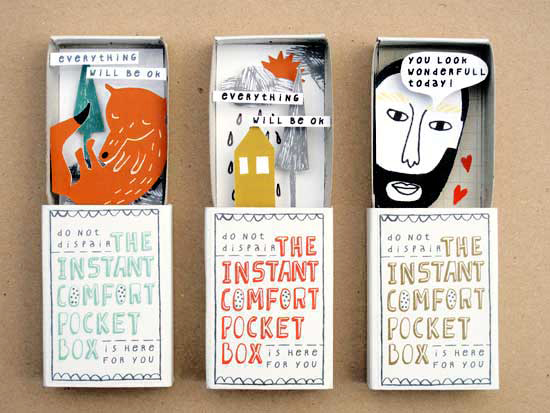
Don’t we all need a reminder like that sometimes? And visual reminders are the best. The concept caught on, with Kim selling thousands of boxes worldwide. Student-created comfort boxes can delight and encourage a classmate, a friend, or someone they know who needs a reminder. For an uplifting Teacher Appreciation Week gift, have your class create a box for every staff member at the school. For more ideas on recognizing and celebrating other educators, check out the article Why Teacher Recognition Is So Important.
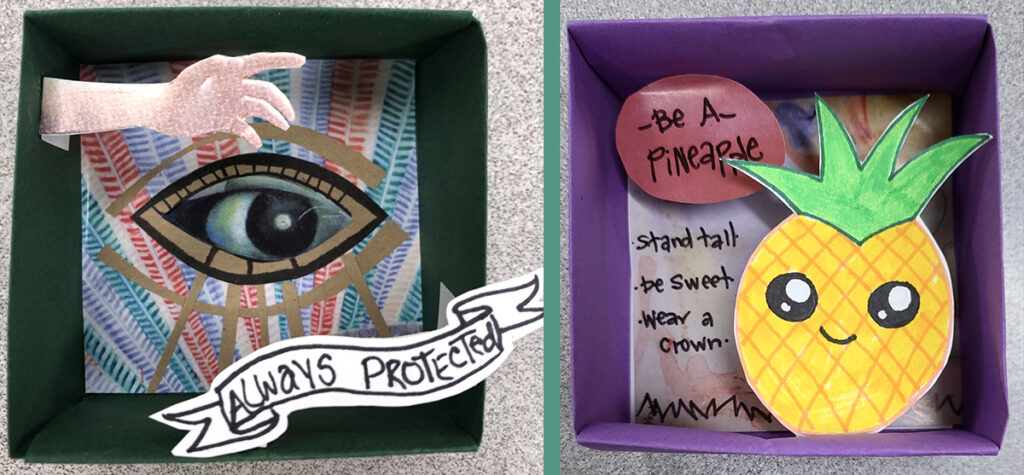
To make an Instant Comfort Pocket Box, start with a box. Blank matchboxes or small gift boxes are available for purchase online. Or show students how to fold an origami box as a transferable skill beyond this one artmaking experience. An interview with a classmate or notes about a loved one can guide the process. Artwork and materials can range from simple line drawings on white cardstock to mixed-media collages concealed within the box itself. Students will consider the recipients’ preferences to determine color choices, content, and message—empathy at its finest.
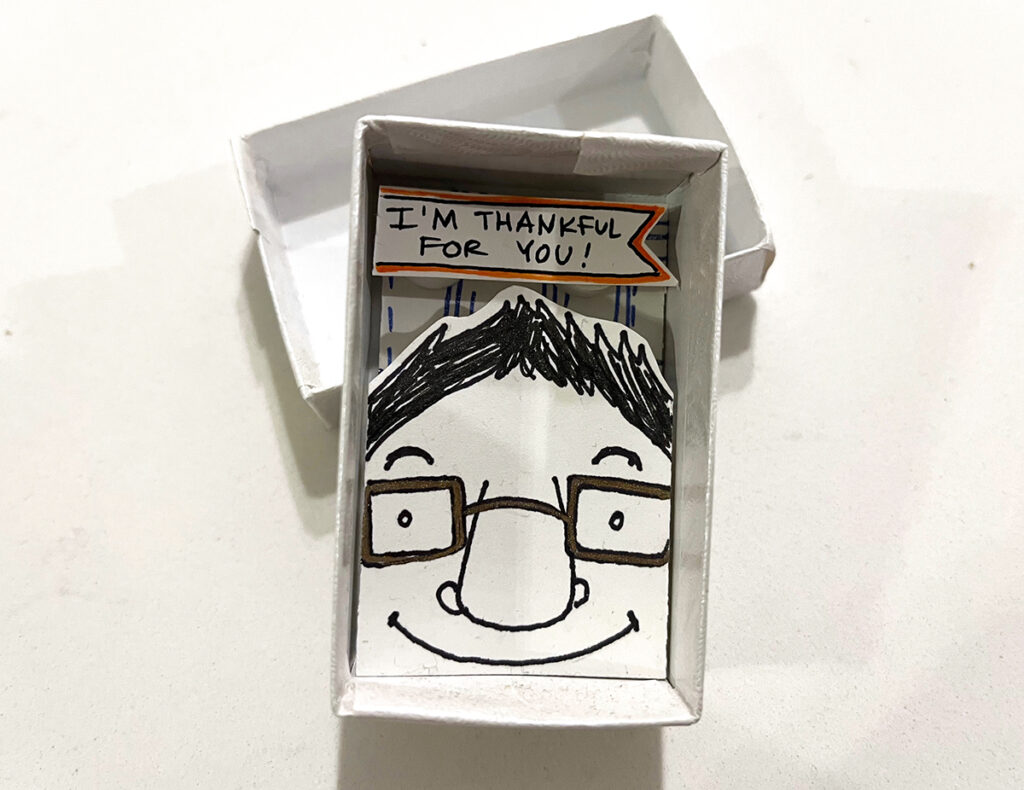
This is NOT one more thing to do.
Inspiring students to think and create with empathy and a gift-giving mindset is not “one more thing.” This thinking can drive purposeful artmaking that enhances the curriculum. Consider lessons and experiences you already do that can be tweaked to support student awareness of others. Examine lessons that can incorporate creating and gifting student work to someone else. In doing so, you teach students about the role of clients in the professional careers of artists and designers. Interviewing a classmate opens their eyes to the lives of others in their classroom community. And the gift of art can bring a smile to the face of both the artist and the recipient.
Which of your existing lessons can be modified to include artmaking for others?
What system can you put in place for staff to request design work from your students?
How can students be paired up for artmaking to encourage relationship building?
Magazine articles and podcasts are opinions of professional education contributors and do not necessarily represent the position of the Art of Education University (AOEU) or its academic offerings. Contributors use terms in the way they are most often talked about in the scope of their educational experiences.
